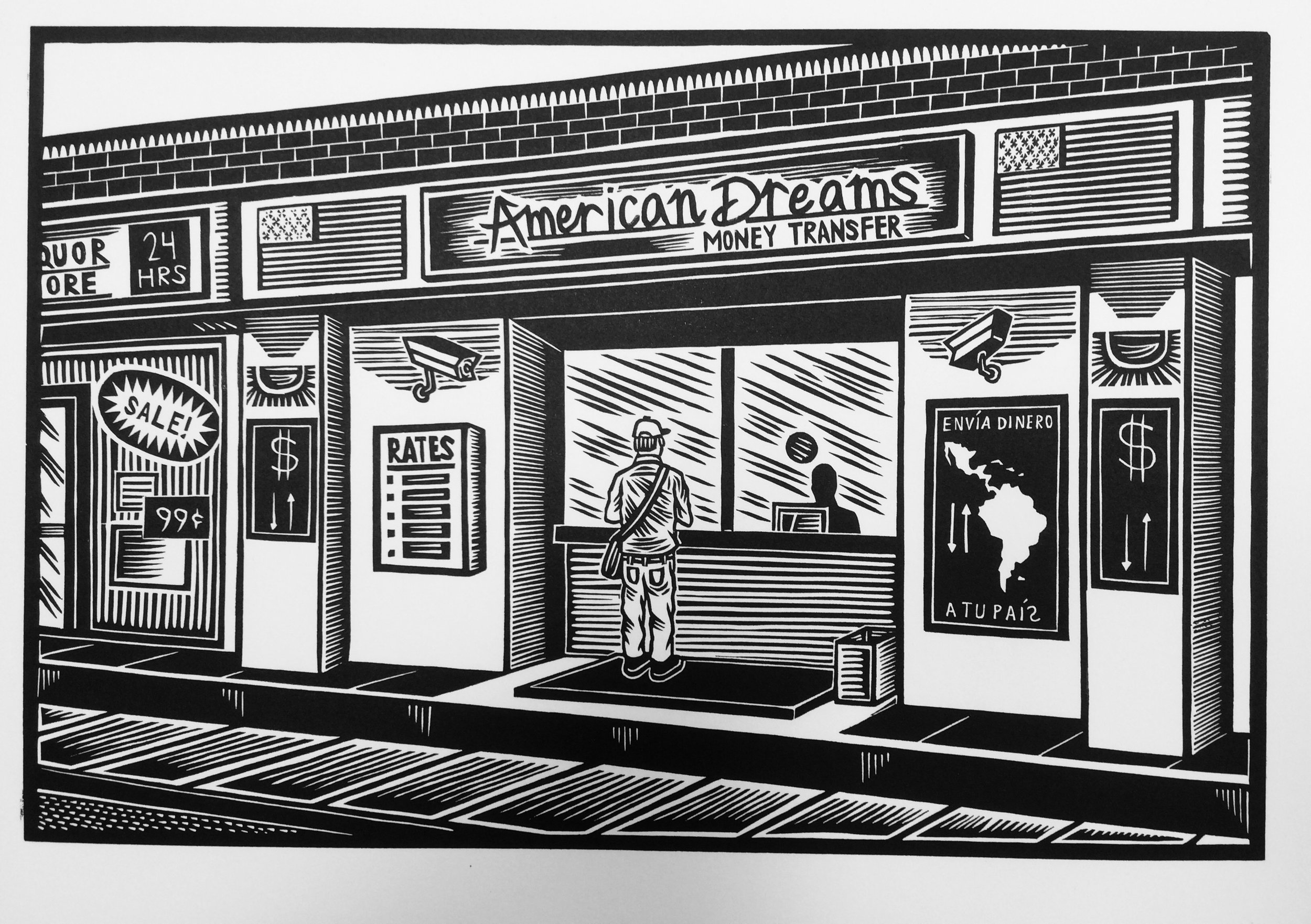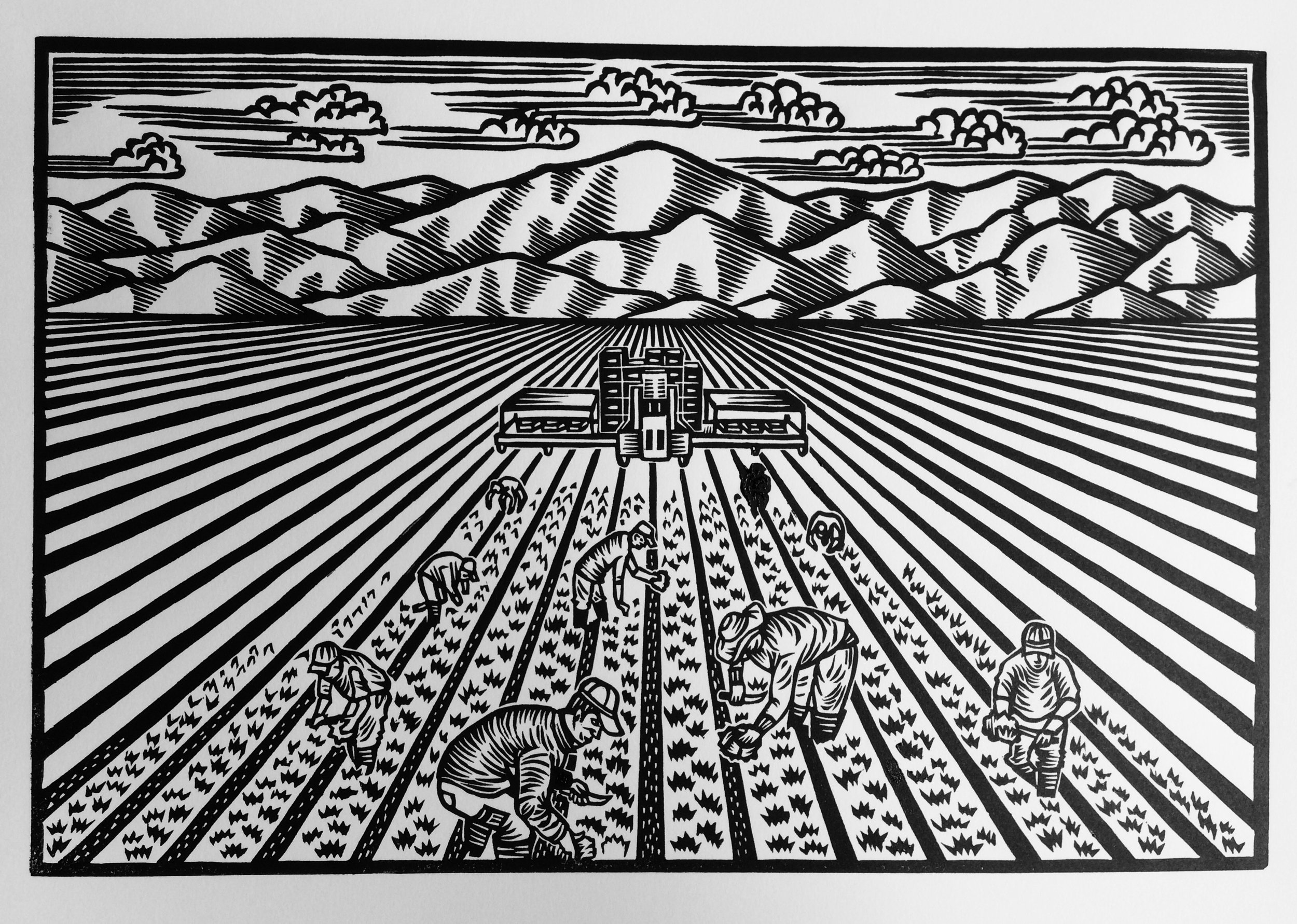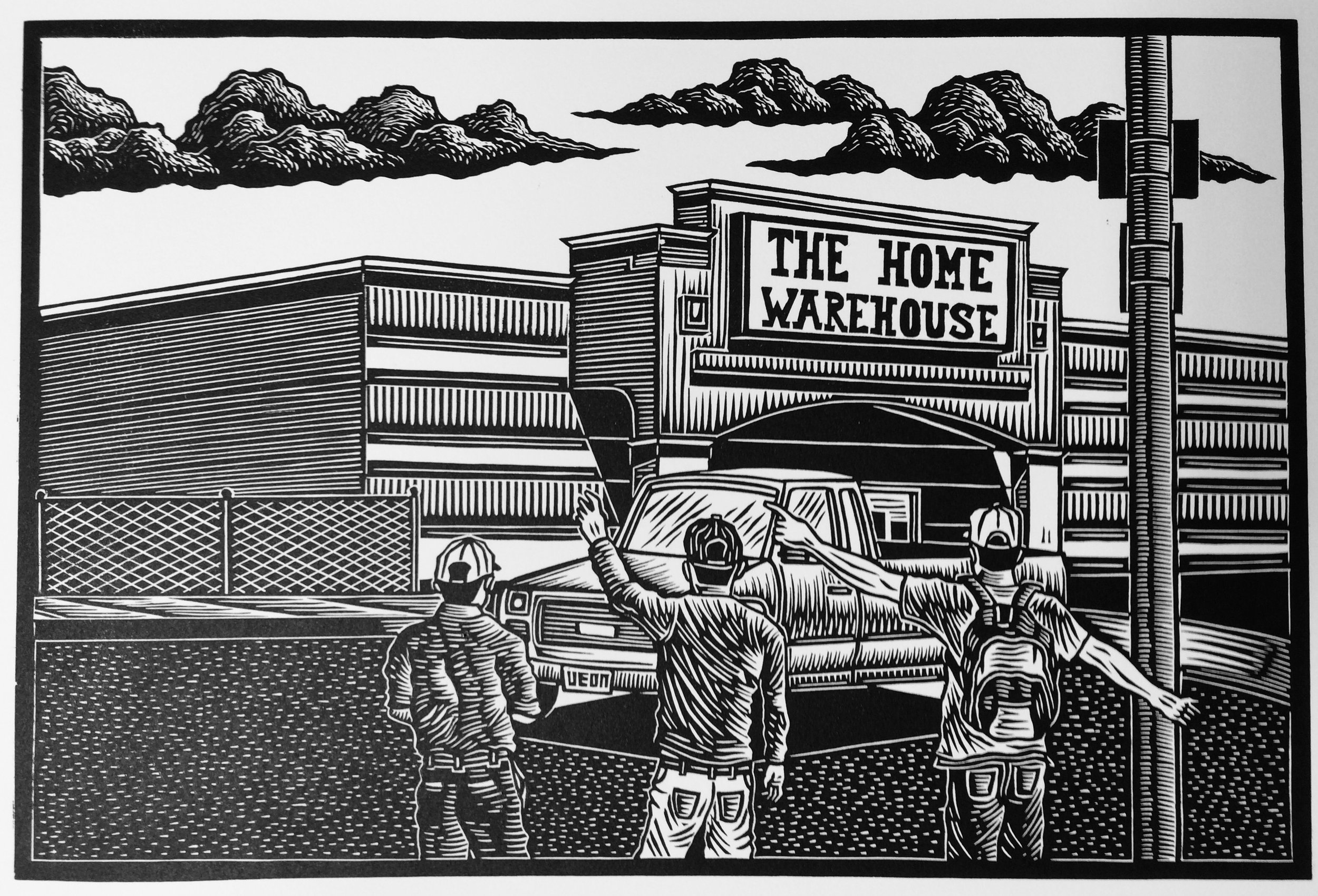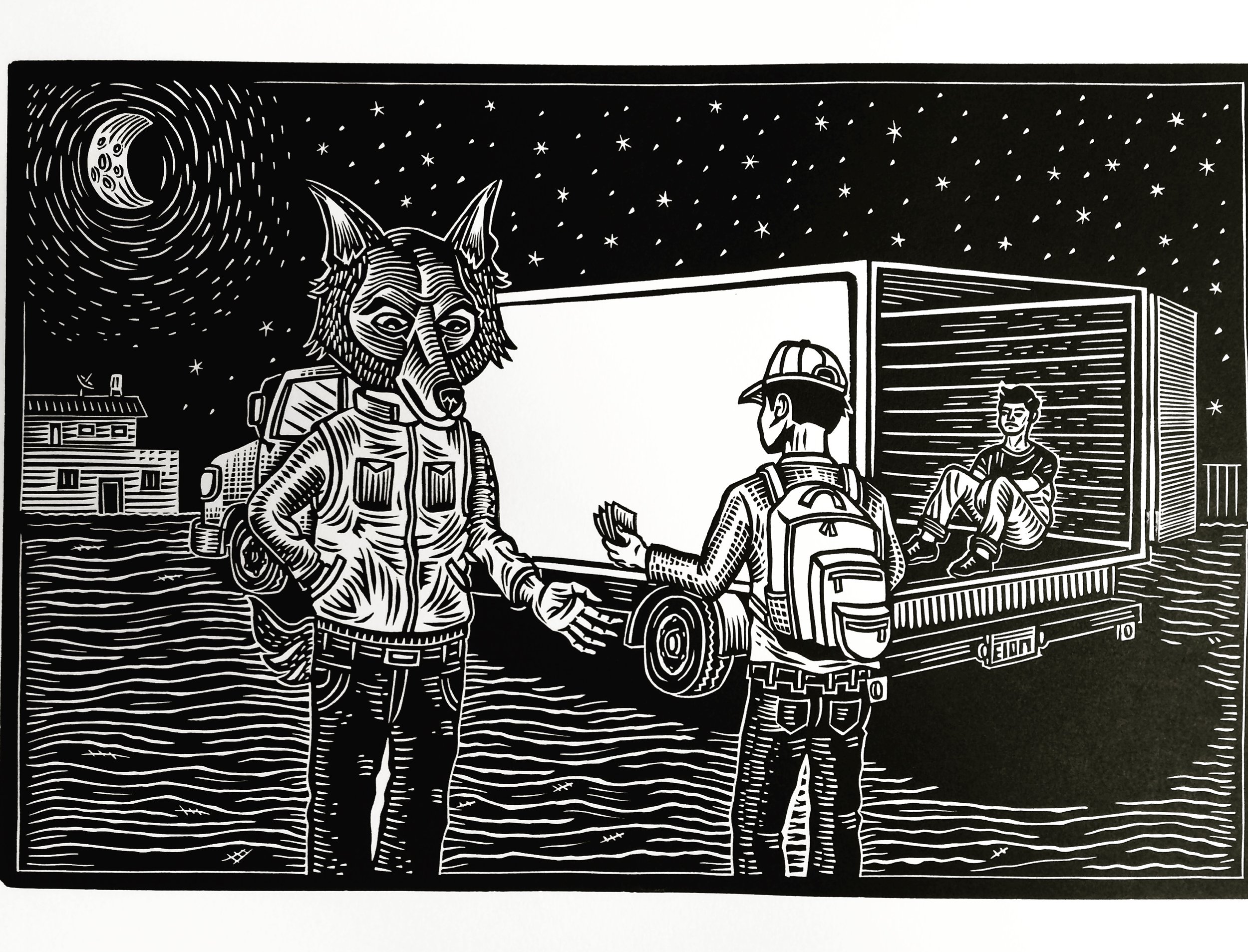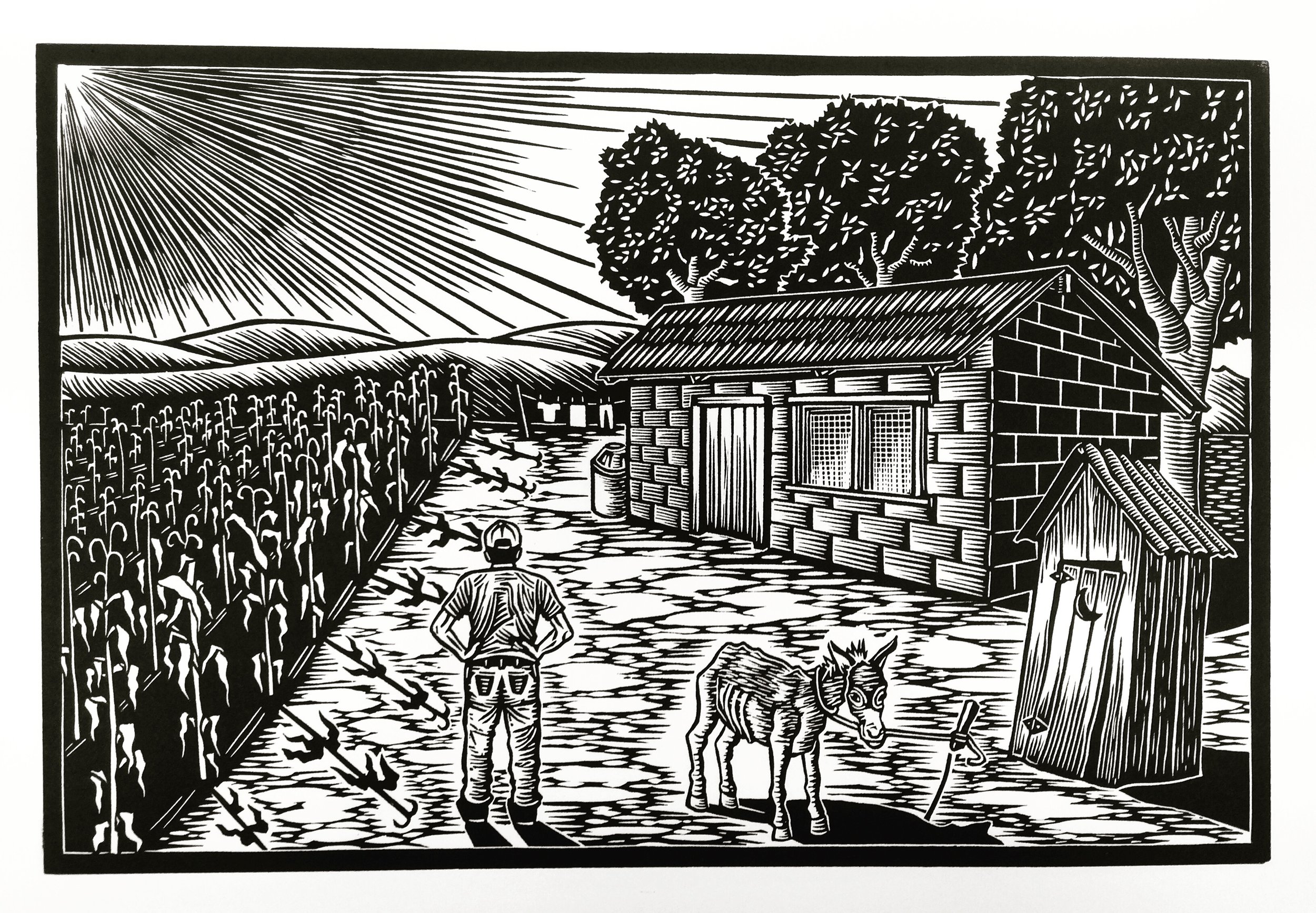Disrupting the American Dream
The American Dream isn’t just a social construct, oftentimes it’s a negotiation. The negotiation is rooted in the hopes for a better life, employment, social mobility, opportunities, and access to education. Yet, because migrants are faced with a system that does not want them and is constantly pushing them out, they are faced with the harsh reality that the “American Dream” isn’t guaranteed through hard work. This unveiling happens in the United States. Just as migrants participate in the American Dream, popular culture in the United States participates in the production of the “migration narrative”. Both are hugely problematic and contribute to a wider issue of misrepresentation.
“I think a lot of artists have challenged this idea of the stereotypical American Dream. I don’t claim originality in this regard. The narrative that I construct weaves together fictional and biographical elements of my father, my grandfather, and people that I know. Our main subject is a male coming from Mexico from a typical cis-gendered family. I think migration has much more complicated stories to tell. This just happened to be the first one I had to get off my chest.”, says Alvaro D. Marquez, the artist behind the 12 print series Al Norte y P’atras.
Strongly influenced by comic books and visual forms of storytelling, Márquez saw linocut and its graphic qualities as an opportunity to tell a story through only images. By printing with black ink he was able to use the natural contrast of the ink and paper to add tension to the story along with a sense of darkness and hope. Márquez’s story about migration captures the push and the pull between the United States and Mexico. “I wanted to rupture these dominant notions of immigrant temporality that assumes that there’s a stable beginning and an end to the journey. People might come to the U.S., spend their time here, and then move back to Mexico. People might get deported if they’re undocumented. So the journey begins all over again, if they choose to. There isn’t this stable timeline that can stand in for the ‘immigration narrative’. There are multiple immigration narratives.”
While the series is exhibited in an order that begins with “La Cosecha (The Harvest)” and ends with “Al Norte”, the series is about more than the chronology and physical journey. It’s about the system. It’s about faith. It’s about family. It’s about labor, resilience, and culture. It’s about existence. “The story isn’t about victims but about people navigating larger historical and social structures on an everyday level.”
Álvaro D. Márquez is a visual artist and part-time professor of Chicana/o and Latina/o Studies at Cal State LA. Márquez's work explores questions of social, racial, and gender inequality and engages questions about the self, history, and one's place in it. You can view more of his work on his Instagram page, @alvarodmarquez.
Arleny Vargas is a Boyle Heights-bred resident. She’s currently an undergraduate student at Wellesley College pursuing her degree in Spanish and Studio Art. Passionate about art and representation, she seeks to combine her writing and art in an effort to combat negative media representation and amplify the narratives and experiences of the Latinx community.


